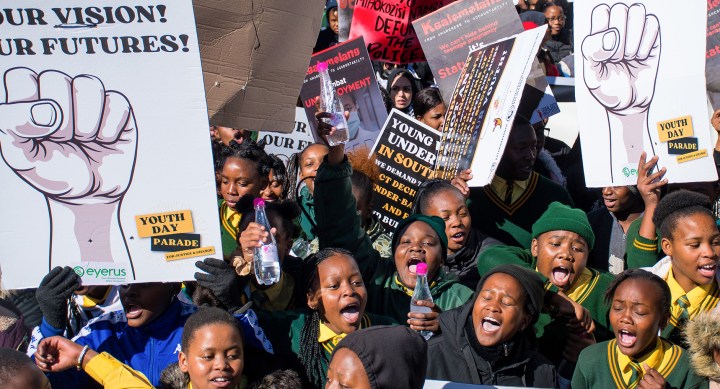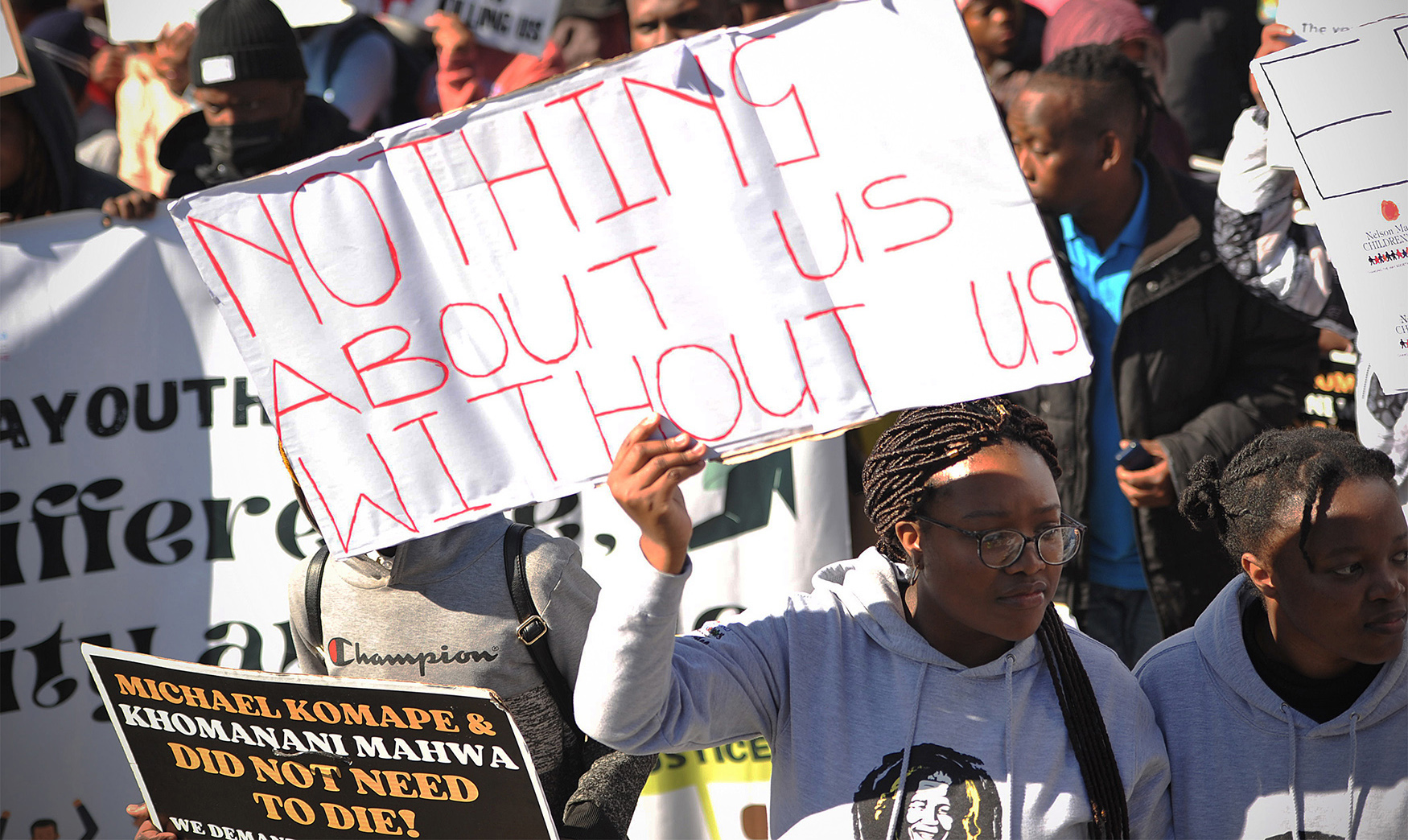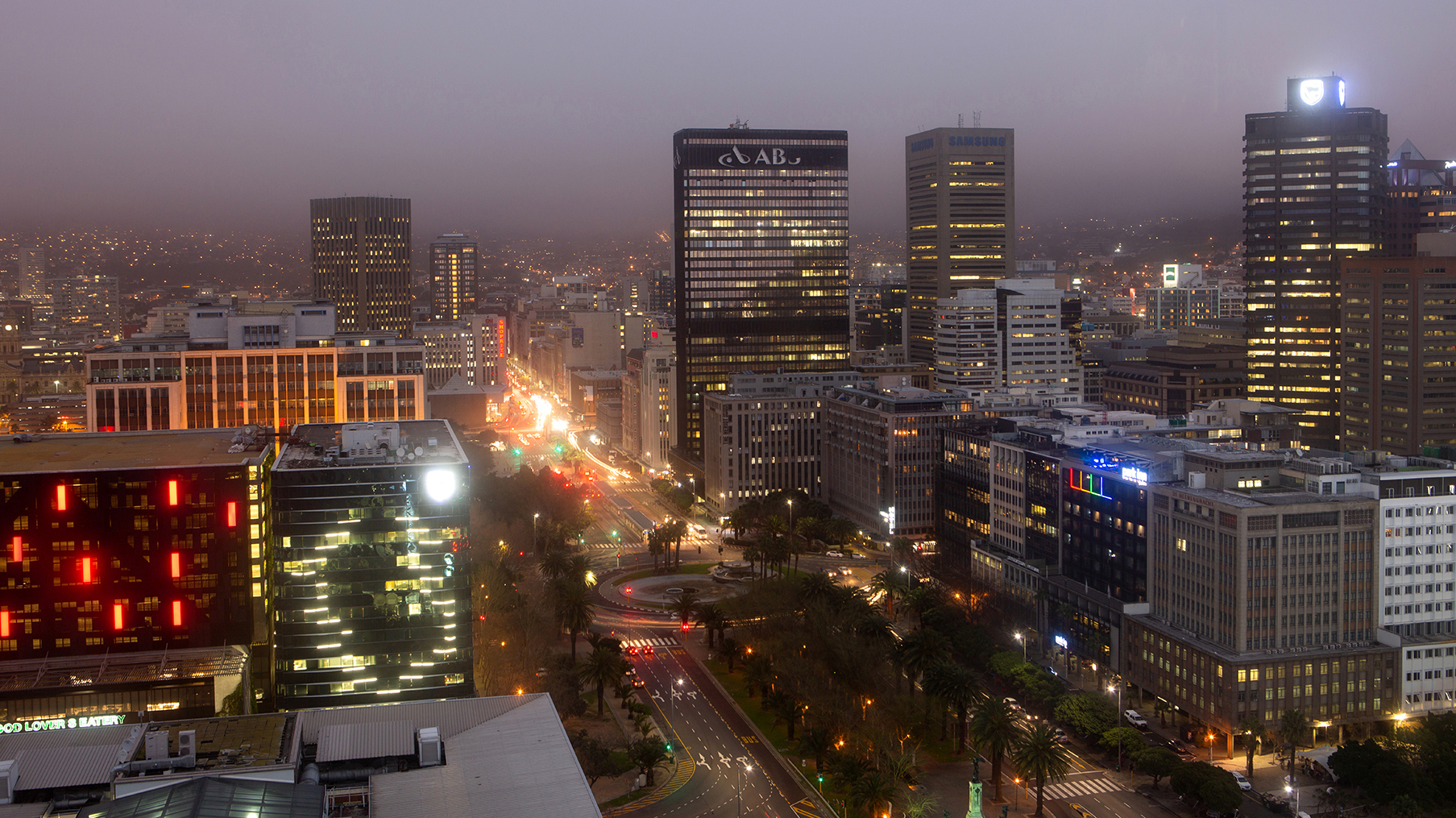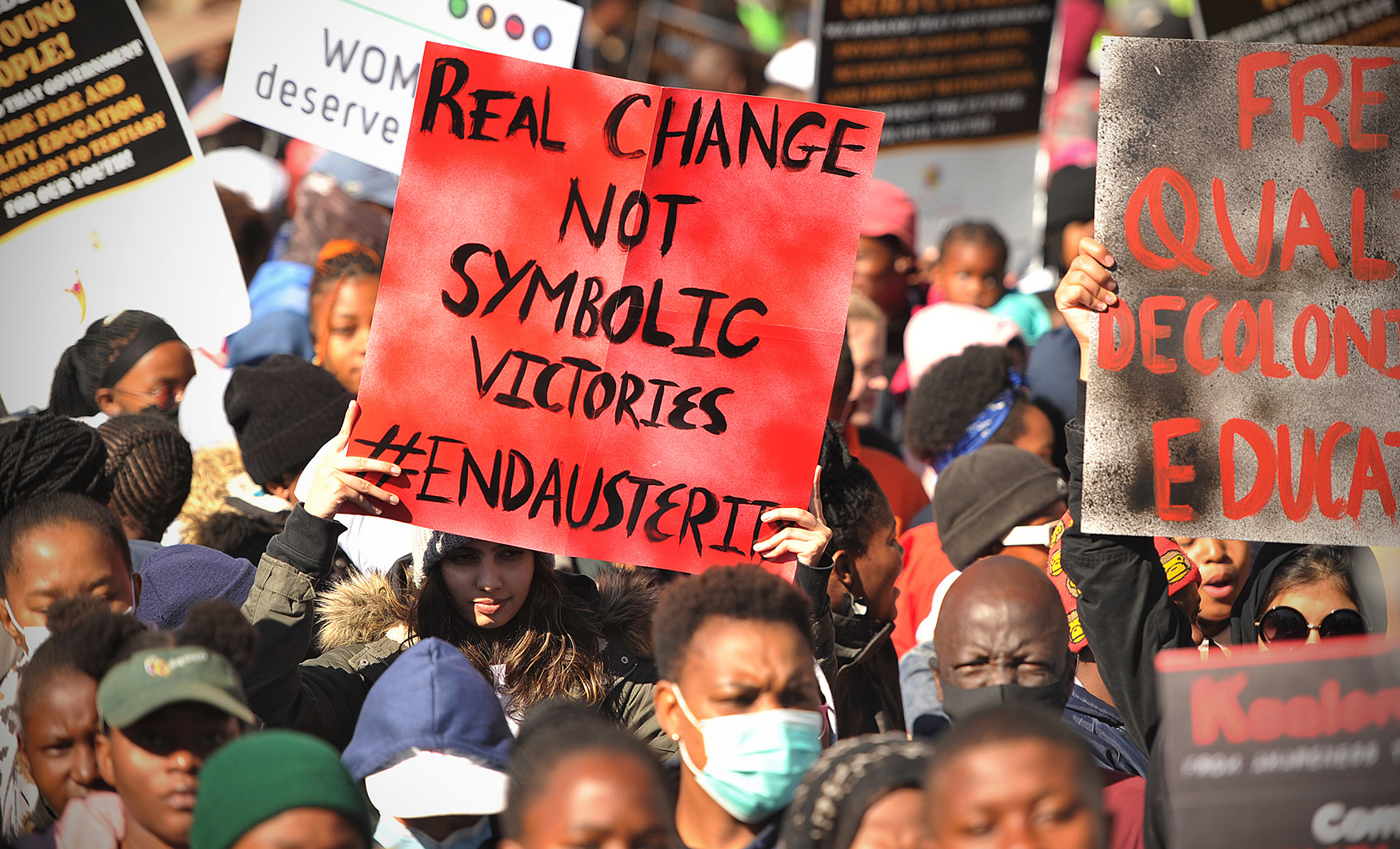URBAN PLANNING OP-ED
Young people, big ideas — the untapped possibilities of South African towns and cities

As a rapidly urbanised country, it is evident from the design of our cities, the dissonance between lofty ideals we have and the reality we face daily, that 16 June cannot continue to be commemorated by elected officials in the way we saw happen again in 2022.
On June 16 2022, 28 years into democracy South Africa’s youth may be free under the rule of law but are still shackled by an urban fabric that limits their access to education, quality liveable urban life and essential services like public transportation and job opportunities.
This is further exacerbated by South Africa’s youth unemployment rate of 66.5% which begs the question: are born frees of South Africa able to extract tangible benefits of democracy without any tangible opportunities?
As a rapidly urbanised country, it is evident from the design of our cities, the dissonance between lofty ideals we have and the reality we face daily, that 16 June cannot continue to be commemorated by elected officials in the way we saw happen again in 2022.
One big problem is wrongly perceived priorities by elected officials in local government areas in their roles in leading towns and cities. This is reflected in the design of our towns and cities.
There’s still a lack of capacity, leadership and ideas to use the built environment to lead us to a just transition through the right design of our cities and towns.
Urban sprawl, mallification and car dependency are the worst outcomes we can have as a society in 2022. Intergenerational equity will remain an idea in the ether if we continue down this path.
But as the youth, we are determined to bring solutions to the table and raise our voices to give better ideas and capacity to municipalities and metros.
From the 16 June uprising to #FeesMustFall, South Africa’s history shows the problem is not an inability of the youth to raise their voices, but rather cities that are not designed to enable the youth to transform into the leaders of tomorrow.
Sean Cooke, Doctoral candidate in Transport studies within the Department of Civil Engineering at the University of Cape Town argues, “by 2100, 49% of all children on earth will be African. If African cities are child-friendly, liveable, and youth-led, we improve the lives of the largest proportion of the next generations, globally.”

Youth from various organisations across south Africa holding up posters during a Youth day Parade for justice and change organised by The Ahmed Kathrada Foundation, held in Pretoria on June 16 2022. They were demanding that Government do all in its power to combat youth unemployment, gender-based violence climate change and crime. (Photo: Denvor De Wee)
This presents us with an opportunity. Below we include six ways our towns and cities can become beacons of hope and bring about tangible change.
Visioning: we need a bold plan for change
We need a bold plan for bold change where the Metro is the vehicle for positive change. A plan that all young South Africans can relate to as a roadmap to a more liveable urbanised country.
Key documents like the 15-minute city by the city of Paris and the 2019 Bogotá City Master Plan are strong benchmarks where transportation and land-use planning were combined to transform a city away from a focus on private cars and sprawling, low-density development patterns towards one which best serves its people and the environment.
These plans are inspiring, digestible and offer key ways for the city to start doing rather than just making another plan. The Bogota Plan also offers an example of a plan developed in collaboration with citizens, creating buy-in for a new city vision along the way.
Administrative: building a capable and caring administration
A capable administration means that every Town and City plan and policy is created with an infrastructure that bridges the gap between identifying solutions and implementing them.
We cannot afford to make more plans with little implementation.
Public transportation: creating an integrated transport network
To make public transportation accessible, we need to create an integrated public transportation network that is safe, frequent and accessible.
Car dependency has direct ties with climate change, it’s a major contributor to greenhouse gas emissions but also leads to cities that take up way too much space leading in turn to large-scale biodiversity loss.
We welcome the recent White Paper on the National Rail Policy that calls for the deregulation of rail authority to cities from national control. However, we would like to add that it will then be for cities to co-work with all parties to create a one-branded network that is integrated, including taxis which are the backbone of this country.
Active mobility and street design: The biggest underrated weapon
Active mobility and street design are one of the biggest underrated tools municipalities and metros can use to be more inclusive, economically thriving and caring.
A big opportunity embraced by leading cities across the world as a result of the Covid-19 lockdowns and temporary reduction in travelling was to reimagine how we design and use our streets. Cars have a big part to play in our urban fabric, but we need to make sure streets and roads are safe for all users, not just for cars.
Examples are having segregated cycling lanes connected to a whole network that can move more people or using street calming interventions to make streets safe for all users where cars should not go more than 45 km/h in built-up areas.

Cityscape of Adderley Street, Cape Town at night. (Photo: Gallo Images / Misha Jordaan)
Studies have shown that there are significant economic benefits in investing in cycling infrastructure and infrastructure that favours pedestrians and other uses of road spaces.
Research has also found that making streets safer for pedestrians means the number of people entering shops and trading can increase up to 40%, and retail rents by 20%.
The benefits of repurposing streets came out of the first talk Young Urbanists South Africa had on how to reimagine the South African CBD by looking at Cape Town first.
Read: Let’s test a permanent road closure of Adderley Street in favour of pedestrianisation
There was an overwhelming consensus that the way we design our inner cities reveals a lot about what kind of country we are and how well we are responding to our contemporary societal struggles.
Urban design: gentle density (at least 3-5 storeys) is what we love, why aren’t we building more of it?
Urban design is the missing piece in the puzzle of any city plan to make sure whatever we have built or what we are going to build aligns with all our goals as a growing urbanised country.
Among the most desired neighbourhoods in South Africa are dense and walkable — so why aren’t we building more of these types of places?
Most of these neighbourhoods predate the 20th century (before the global spread of the private automobile), when walking was the way most people got around, land parcels were small and buildings tall and narrow.
This type of urban environment is no longer possible in new areas being developed as City-mandated set-back requirements spread buildings apart, parking requirements and our traffic engineers make our streets much too wide and the only new suburbs being built require a car just to buy a loaf of bread.
Among the United Nations Habitats’ five principles to become liveable are higher density, mixed land-use and social mix. We are not doing it.

Youth from various organisation across south Africa during a Youth day Parade for justice and change organised by The Ahmed Kathrada Foundation, held in Pretoria on June 16 2022. They were demanding that Government do all in its power to combat youth unemployment, gender based violence climate change and crime. (Photo: Denvor De Wee)
Regenerating our neighbourhood centres: violence prevention and economic development through urban upgrading
Years of underinvestment in some of our secondary CBDs, town centres and community nodes have led to the economic decline of these areas and the shutting down of local stores.
Residents of neighbourhoods like Athlone in Cape Town or Katlehong in Johannesburg now need to travel further to make essential purchases, when previously they could purchase these items in their neighbourhoods.
Investment in our secondary CBDs, town centres and community nodes can foster community pride and positive civic engagement, make these areas safer and also kick-start an economic recovery in local mom-and-pop shops that puts money back into the hands of the community rather than large malls which extract profits out of these areas.
South African cities need to empower the youth ensuring that our cities are capable of transitioning the youth of today into the leaders of tomorrow.
One such example is the Urban Mobility and Design Forum in partnership with the Mayor’s Office of the City of Cape Town. The intention of the Forum is to be a conduit to give space for ideas, existing plans and new partnerships to be formed to create a more inclusive, just and climate-friendly city.
We have seen the power the youth holds from their influence in driving South Africa towards free education. We want to remind decision-makers that the clock is ticking. Work with us, we have the solutions and need to act now and not wait another five years for another plan to tell us what we need to do. DM/MC
Born and raised in Pretoria, South Africa, Roland Postma is the current Organisational Coordinator for Young Urbanists South Africa where he seeks to support young urbanists and instil positive change. He is currently Head of Change for Electric Life Rides trying to shift the mobility paradigm and holds an Honours in Urban and Regional Planning from the Royal Institute of Technology. He has spent over a decade abroad where he has co-founded Australian Planners Declare and writes for the Local Government Information Unit. He can be followed on Twitter.
This article is based on Young Urbanist’s briefing document to the City of Cape Town on Six ways for the City of Cape Town under bold leadership, to be the best run in the world. The report can be viewed here and is authored by Roland Postma, Jodi Allemeier & Sean Dayton with input from Kirsten Wilkins, Tessel Pool, Marko Kiessling, Muhammed Lokhat and Tristan Sandwith.




















 Become an Insider
Become an Insider
Comments - Please login in order to comment.